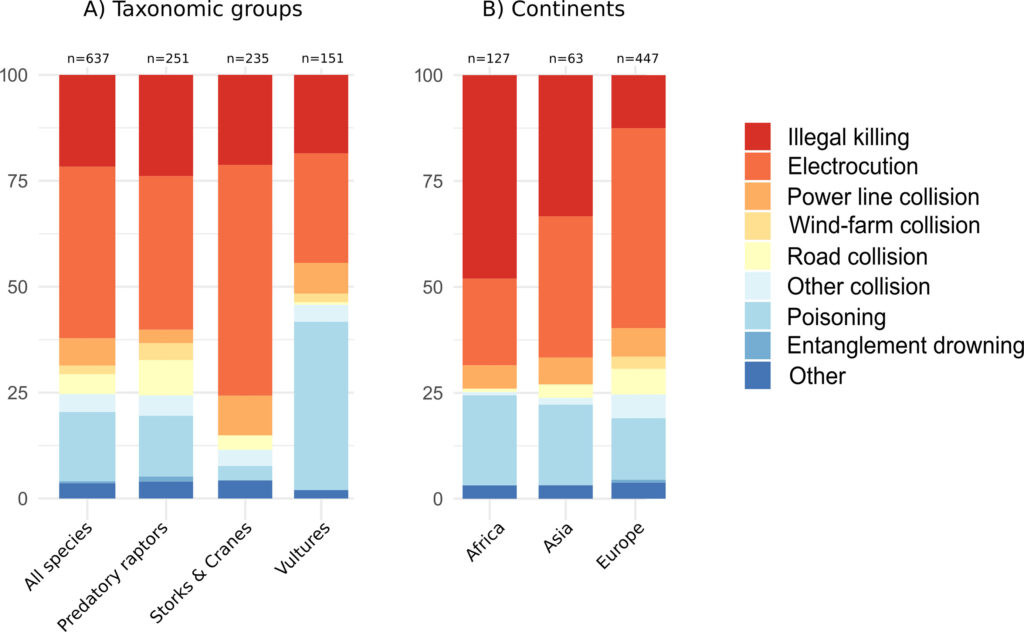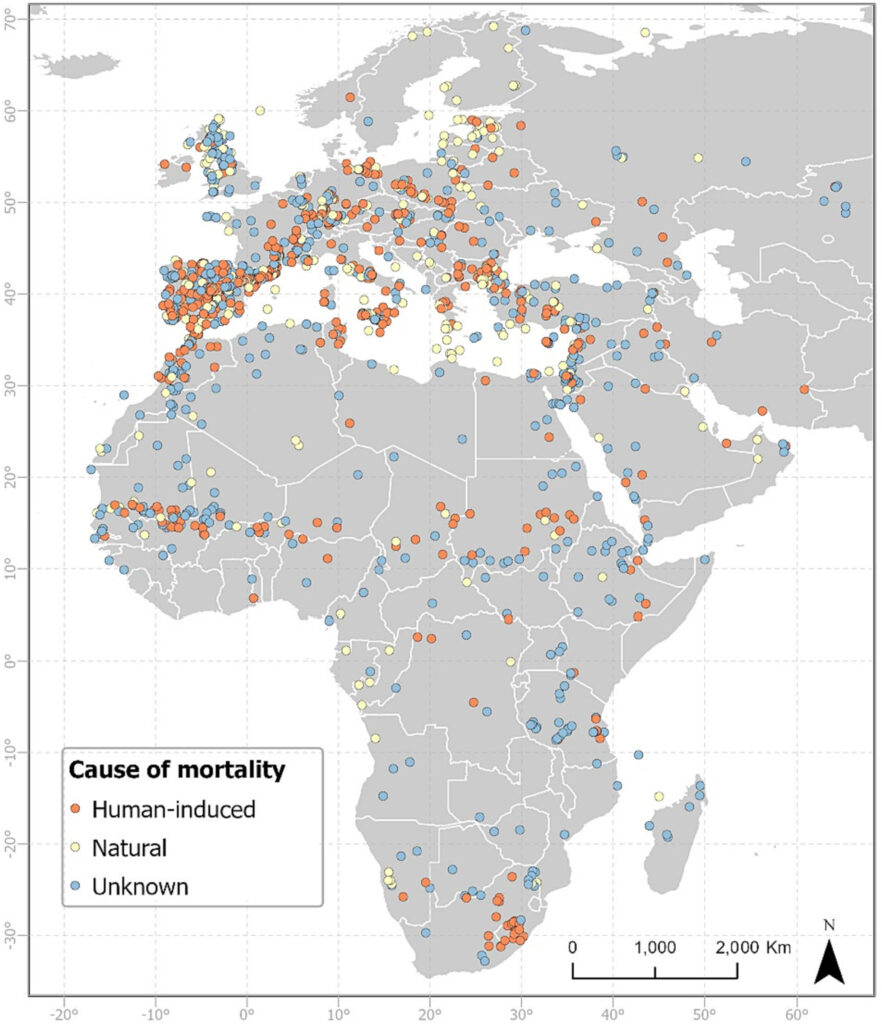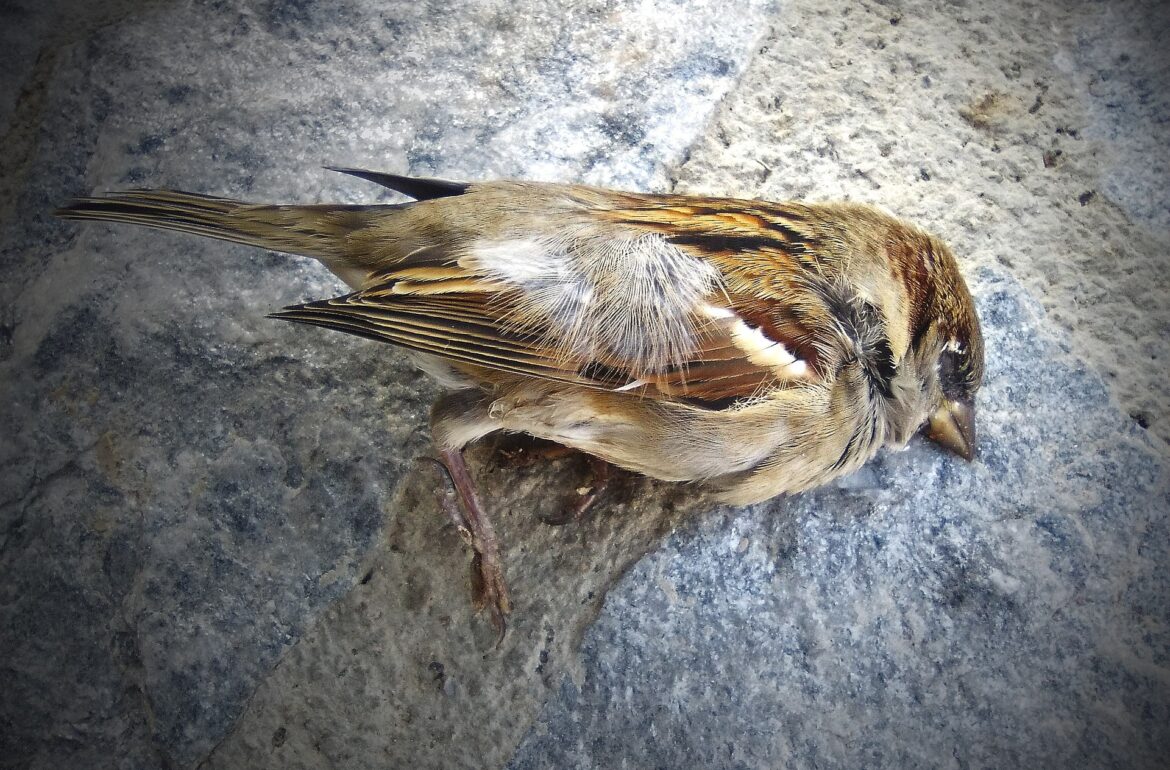From the telemetry of eagles and other birds of prey as well as cranes and storks monitored between 2003 and 2021, human-caused deaths are 1.64 times more frequent than deaths from natural causes for the observed species. The largest number of birds are being killed by the energy infrastructure.
The study analysed the deaths (1704) of marked (total 4097; most of them white storks) birds. Although the overall mortality risk of birds is known, it has not been studied regionally and the factors causing it have not been examined. Estonian eagles, buzzards, marsh harriers, black storks and cranes that breed in Estonia and were tagged under the leadership of Estonian University of Life Sciences researchers Ülo Väli and Ivar Ojaste and eagle researcher Urmas Sellis also contributed to the collection of the voluminous data set.
Of the human-caused deaths (637), electric shocks (40.5%) were the most common. Together with deaths caused by power lines, 49% of the total number of deaths were caused by energy infrastructure. These were followed by poaching (21.7%), poisoning (16.3%) and collision with cars or buildings. Natural deaths were caused either by drowning, predation, starvation (including exhaustion) or disease. Despite efforts, the human-caused deaths of birds migrating from Europe to Africa have not decreased over time, indicating that the protection of the species has not been sufficient – the protection measures must be stricter or more precise. In the development of energy infrastructure, this means stricter consideration of nature both in location selection and later operation.

The ratio of human-caused to natural deaths was highest in Africa (2.4), where poaching (48% of deaths) is in first place. In Europe, the leading cause of death is electric shock (47%). Buzzards, harriers and cranes are less likely to be killed by humans, but eagles are at higher risk. Human-caused mortality was high at all latitudes, but fell north of the 40th latitude, i.e. moving towards Northern Europe – this is good news for us in Estonia, but does not mean we should relax in our vigilance. The authors emphasise that it is not possible to calculate exact mortality rate from telemetry data either, so it is not possible to calculate the general demographic impact of the causes of death.
An interesting result is that the risk of bird mortality was very low in areas with low human influence and low in urbanized areas with high human influence, but highest in areas with a medium human environmental footprint. Therefore, even moderate human influence can have a significant effect on the death of birds, and it is not reasonable to move the energy infrastructure away from humans into nature. While in Estonia the opposite can be seen at the moment, development should be done in areas close to settlements, which birds avoid anyway.
Over the years, human-caused mortality has not changed, even though causes of mortality have changed. For example, in Spain, poaching has decreased, but at the same time, deaths due to wind generators have increased; poisonings have increased significantly in Africa, which may shadow declines in other causes. For example, the killing and poisoning of birds in Africa also has a superstitious background (they are bad birds!).

Renewable energy (especially produced from the sun and wind) will grow significantly in the future, and by 2050 we can expect a tenfold increase in electricity production from onshore wind turbines worldwide. However, this requires the development of the electricity grid. However, the human-caused deaths of approximately half of the world’s birds (as much as 57% in Europe; only 26% in Africa) are caused by energy infrastructure, and it can be assumed that this proportion will increase in the future.
According to the authors of the study, the question is particularly telling in Africa, where there is a prerequisite for growing energy production and where (for example, in Kenya and Ethiopia) collisions with power lines and electric shocks from the lines are already a great threat to birds of prey. Therefore, it is necessary that the assessment of the environmental effects is comprehensive and that underground cables are preferred over overhead lines, which would make the energy infrastructure significantly more bird-friendly. In Estonia, the laying of underground cables in wind farms is rather common, while overhead lines are avoided.
To protect birds, it is also important to pay attention to energy, because it has a significant impact on birds, especially on protected species. Therefore, officials must also be vigilant and base their decisions only on those studies whose results are convincing; if the results of the study do not clearly indicate a lack of effect, the precautionary principle shall be applied.
The research paper reference: https://www.sciencedirect.com/science/article/pii/S0006320724000867?via%3Dihub
This article is writteb by Marko Mägi. It was originally published on the “Birdwatcher blog”.
If birds fascinate you and their songs bring you joy, fly over to our webpage for more feathered info about how Feathers talk: birds are more abundant in diverse forests!
 Back
Back



